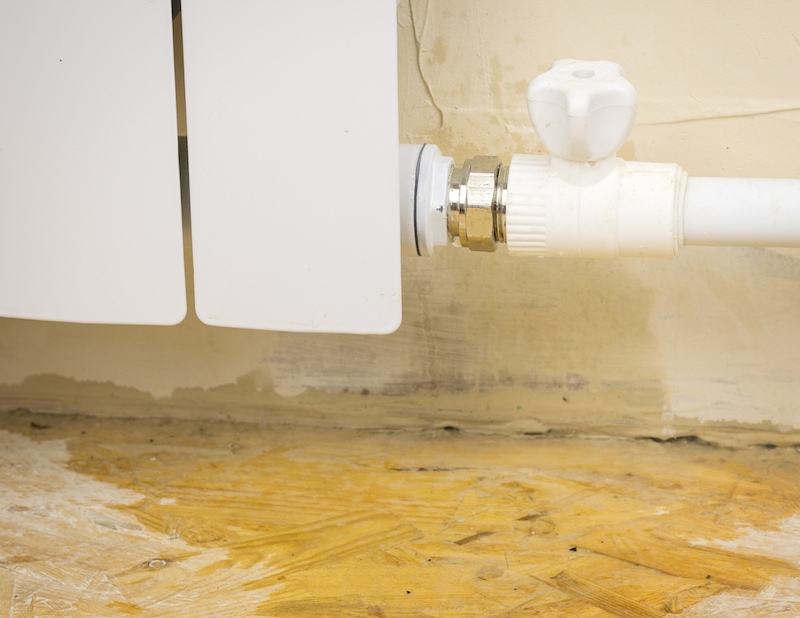Understanding the Six Most Frequent Causes of Water Leaks in Homes
Understanding the Six Most Frequent Causes of Water Leaks in Homes
Blog Article
We've stumbled upon this great article involving Top Causes of Home Water Leaks down the page on the internet and believe it made good sense to share it with you on this site.

Leaks not just trigger waste of water yet can also trigger unnecessary damage to your home and promote unwanted organic development. By looking as well as understanding for everyday situations that create leaks, you can shield your home from future leaks and also unneeded damages.
Encroaching roots
Most water leakages start outside the house rather than inside it. If you notice an abrupt decrease in water stress, state in your tap, require time to go out and also examine your yard. You might see damp spots or sinkholes in your backyard, and that might indicate that tree origins are invading water lines creating water to leak out. You can have your plumber check for breach, particularly if you have trees or bushes near your residential property.
Corroded water supply
This could be the cause of staining or warping on your water pipelines. If our plumbing system is old, consider changing the pipes since they are at a higher threat of rust than the more recent models.
Malfunctioning Pipeline Joints
The point at which your pipes connect is often the weakest link in the waterline. Pipeline joints can wear away over time, causing water leakages. The majority of pipe joints are not conveniently noticeable. If you have noisy pipelines that make ticking or banging noises, especially when the hot water is switched on, your pipeline joints are probably under a great deal of stress. It is recommended to have your plumber examine your system annually.
Instantaneous temperature adjustments.
Severe temperature level adjustments in our pipes can create them to increase as well as acquire suddenly. This growth and also tightening might trigger fractures in the pipelines, especially if the temperature level are below freezing. It would be best if you watched on exactly how your plumbing works. The presence of the previously discussed scenarios regularly shows a high threat.
Poor Water Connectors
At times, a leak can be brought on by loosened hose pipes and pipes that provide your home appliances. Typically, shifting is what causes the loose water Links. You might find when it comes to a washing device, a hose may spring a leakage because of drinking during the spin cycle. In case of a water links leakage, you may see water running straight from the supply line or puddles around your appliances.
Obstructed Drains
Obstructed drains could be bothersome and also inconveniencing, but they can occasionally end up triggering an overflow leading to rupture pipelines. Keep eliminating any materials that might drop your drains that can block them to stay clear of such troubles.
All the above are reasons for leaks yet not all water leakages arise from plumbing leaks; some leaks might come from roof leakages. All leakages should be repaired right away to prevent water damages.
Leaks not just create waste of water but can also cause unnecessary damages to your residence and also promote unwanted natural development. By looking and also comprehending for day-to-day situations that cause leaks, you can secure your residence from future leakages and also unneeded damages. Today, we will certainly look at 6 leakage causes that may be causing your pipes to drip.
At times, a leak can be caused by loose hoses as well as pipelines that supply your home appliances. In situation of a water connections leak, you may notice water running directly from the supply line or puddles around your appliances.
How To Check For Water Leak In Your Home
How To Check for Leaks
The average household's leaks can account for nearly 10,000 gallons of water wasted every year and ten percent of homes have leaks that waste 90 gallons or more per day. Common types of leaks found in the home are worn toilet flappers, dripping faucets, and other leaking valves. These types of leaks are often easy to fix, requiring only a few tools and hardware that can pay for themselves in water savings. Fixing easily corrected household water leaks can save homeowners about 10 percent on their water bills.
To check for leaks in your home, you first need to determine whether you're wasting water and then identify the source of the leak. Here are some tips for finding leaks:
Take a look at your water usage during a colder month, such as January or February. If a family of four exceeds 12,000 gallons per month, there are serious leaks.
Check your water meter before and after a two-hour period when no water is being used. If the meter changes at all, you probably have a leak.
Identify toilet leaks by placing a drop of food coloring in the toilet tank. If any color shows up in the bowl after 10 minutes, you have a leak. (Be sure to flush immediately after the experiment to avoid staining the tank.)
Examine faucet gaskets and pipe fittings for any water on the outside of the pipe to check for surface leaks.
Undetected water leaks can happen without the home or business owner even realizing. If you suspect a water leak, but not able to find the source. It is time to contact a professional water leak detection service, The Leak Doctor.
How To Find a Water Leak In Your Home
https://www.leakdoctor.com/blog/How-To-Check-For-Water-Leak-In-Your-Home_AE197.html

We were made aware of that editorial about How Fast Water Damage Can Ruin Your Home through a good friend on another blog. Sharing is nice. Helping people is fun. Many thanks for your time invested reading it.
Click Here Report this page